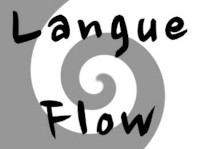
LangueLetter: Literary code-switching degrees
by Johanna Domokos, Marianna Deganutti, Sabira Ståhlberg and Jana-Katharina Mende
Multilingual literature is becoming increasingly popular. Traditional literary studies, however, still focus on national and often monolingual norms, methodologies and literary histories.
The new development influences also literary scholars: we increasingly examine texts containing multiple languages. But multilingual literary practices are classified in many ways, and there is much confusion in the terminology and in the theoretical and methodological aspects.
An approach to multilingual texts we suggest here could be to identify and categorise them according to their degree of multilingualism.
This article contains questions and tasks which should be answered in writing. It can be adapted and used in class or for self-study.
*
The term multilingualism is today employed for all kinds of situations involving more than one language. Bilingualism or the use of two languages is also often called multilingualism. Literary scholars talk about multilingualism even when an author writes only in one language, but has a background of using another language.
Scholarly definitions for describing the use of multiple languages in literature are among others multilingualism, multilingual literature, polylingualism, polylanguaging, polyglot literature, heterolingualism, plurilingualism, translingualism, literary transnationalism, exophony, semiodiversity or hybridity.
→ Task: Reflect on your languages. What does multilingualism mean to you?
Code-switching
Code-switching is a common tool employed by writers in all literary genres since ancient times. Various languages and linguistic elements are mixed and played with, for example to introduce or describe multilingual and multicultural encounters or aspects. Code-switching occurs often in among others folk tales, epic poems, oral poetry, travel narratives, science fiction and comics.
→ Question: What does code-switching mean for you personally?
In everyday life, code-switching with multiple languages or dialects occur all the time. Usually we do not notice it, because we perceive it as normal. But scholars are concerned mainly with bilinguals: code-switching in academic research is commonly defined as the use of only two languages or codes within the same conversation.
→ Question: When, where and why do you notice code-switching?
The terminology and the way code-switching is analysed in academic literature can be confusing. Also, each author’s multilingualism is individual. The practices vary considerably in the way languages are qualitatively and quantitatively employed by writers.
Yet, there should be, and there are certain similarities and patterns we can analyse. The essential question is: can we create one model to fit them all?
→ Task: How do you use languages on a daily basis? What do you use languages for – studies, hobbies, books, films..? Write a list.
In our book Literary code-switching and beyond we have constructed an innovative framework to include multiple and various multilingual literary practices. We define literary code-switching as an aesthetic play with multiple formal elements and/or semantic interpretations.
These elements and interpretations are not limited to mimetic function. Mimetic function in literary multilingualism refers to the way in which authors use multiple languages within a text. Mimetic function is an obvious and clearly visible form of code-switching.
Examples of mimetic functions: Languages, dialects and accents can
- mirror or represent linguistic and cultural realities of the characters and the world they inhabit in the literary work
- reveal the linguistic diversity of characters, settings or social groups
- create a sense of place and atmosphere
→ Task: Give examples of texts with mimetic functions. For what purposes do the author(s) use multiple languages?
Literary code-switching differs from oral or spoken code-switching. Speakers have the possibility to use face expressions, tones, pitch, volume (whisper or raise the voice), silence and other means to transmit their meaning.
This is not possible in a text. When writing, all essential information must be included in one code – the written word. Everything has to be expressed or implied in the languages used.
Through the languages, the writer not only indicates or implies geographical, social, economic, cultural, linguistic, political and other circumstances of the literary context or the characters. Code-switching can also reflect and show the state of mind or the way characters interact with each other.
Multilingual writers tell a lot about themselves, too. We get to know not only the authors’ linguistic, cultural and other backgrounds and interests, but also a lot about their own world or universe.
Further, literary code-switching reveals various communicative levels between author and reader, narrator and recipient, and between the characters in the text.
→ Questions: Do you look for specific languages, author or topic when exploring new literature? Do you look for information about the author when you read a book?
Some situations in a text seem to “justify” the use of a certain language. It is therefore very important to ask how, when and why certain linguistic elements are selected and combined by the writer. These elements can be anything from phonemes to larger linguistic units, and even various scripts or semantic meanings.
A matrix language is the dominant language in a code-switching situation. It provides the grammatical framework and vocabulary. Words or phrases from other languages are called embedded language, because they are inserted into the matrix language.
→ Question: In what kinds of narrative situations could the use or embedding of other languages into a matrix language be justified?

The terminology and analysis of code-switching in academic literature can be quite confusing. A framework could be useful.
Our framework is named Literary Code-Switching (Domokos 2018; Domokos and Deganutti 2023). The framework has been developed as a tool for understanding and describing multilingual literary strategies from hidden to extremely heterogeneous.
The framework begins at level zero with so-called latent, hidden or covert multilingualism. The text seems on the surface to be monolingual, but multiple languages are present, although they are not immediately visible.
The degrees of code-switching are then scaled up to level six. The degree of multilingualism increases as the matrix language gradually disappears. Level six is the most openly expressed, overt or manifest multilingual text form. The seven degrees can be divided into further subcategories.
Let us now take a look at the levels, from the hidden use of multiple languages to the complete disappearance of not only of a matrix language but also of understandable words.
Zero degree
At zero-degree code-switching, there is no visible other language than the matrix language. Various languages might be present, but the writer has chosen not to challenge the reader by openly using several languages. The languages might appear for example in the way someone speaks, in names or in the way something is described, or even when a character in a book does not understand another language.
→ Task: Write one or more sentences in one single language about something you have done today or yesterday.
First degree
First degree code-switching contains occasional use of words, exclamations or expressions from other languages besides the matrix language. They can for example be employed to explain objects or situations specific for languages or cultures in the text.
→ Task: Put a few words in another language into the sentence(s) you just wrote.
Second degree
Second degree code-switching contains entire sentences in another language. The phrases can for example appear in dialogues or when the character is thinking in another language, or to describe something specific.
→ Task: Write a few explanations, exclamations or comments to your sentence(s) in another language.
Third degree
At the third degree code-switching, matrix and embedded languages are starting to blur. This means that the border between the languages is not completely clear and the words in sentences are mixed.
→ Task: Mix the words in your sentences. Put words in various places and change word order.
Fourth degree
At the fourth degree code-switching, the author uses different words and word forms from various languages in a single sentence. Words might be cut into pieces and reassembled or prefixes and suffixes from one language can be “glued” onto words from another language.
→ Task: Take parts of words from one language and glue them onto another language. Add words in more languages to your sentences.
Fifth degree
On the fifth level, it is not easy anymore to identify the main language or the inserted or embedded languages. Sentences are not always complete. Grammar, words and word order are mixed. The authors might also invent words.
→ Task: Cut your sentences into smaller pieces and mix them even more. Add new words and invent words of your own.
Sixth degree code-switching
On the highest or sixth level, the main and inserted or embedded languages blend completely. There are many forms of language mixing in grammar, spelling, scripts, etc.
→ Task: Now mix your sentences completely. There should be nothing clearly identifiable in any language: word forms, scripts, spelling etc. should all be mixed.
Perspectives
The framework we propose for analysing literary code-switching allows hopefully for a more nuanced understanding of how writers employ multiple languages to create unique literary experiences.
Feel free to test our framework and tell us how it worked. See how the polyglot poet Sabira Ståhlberg deals with the code-switching degrees: Balalar of imperier – Children of Empires (Journal of Literary Multilingualism 2023).
→ Task: Write your thoughts and experiences about working through the code-switching degrees. What was easy or difficult? What challenges did you encounter and how did you solve them? What could be improved in the framework?
References
Domokos, Johanna 2018: Endangered Literature: Essays on Translingualism, Interculturality, and Vulnerability. Budapest: L’Harmattan/Károli Books.
Domokos, Johanna and Marianna Deganutti 2023: Literary Code-Switching and Beyond. Budapest: L’Harmattan/Károli Books.
Ståhlberg, Sabira 2023: Balalar of imperier – Children of Empires. Journal of Literary Multilingualism, Vol. 1, No. 2: 294–310.
Photos: © Sabira Ståhlberg 2025
